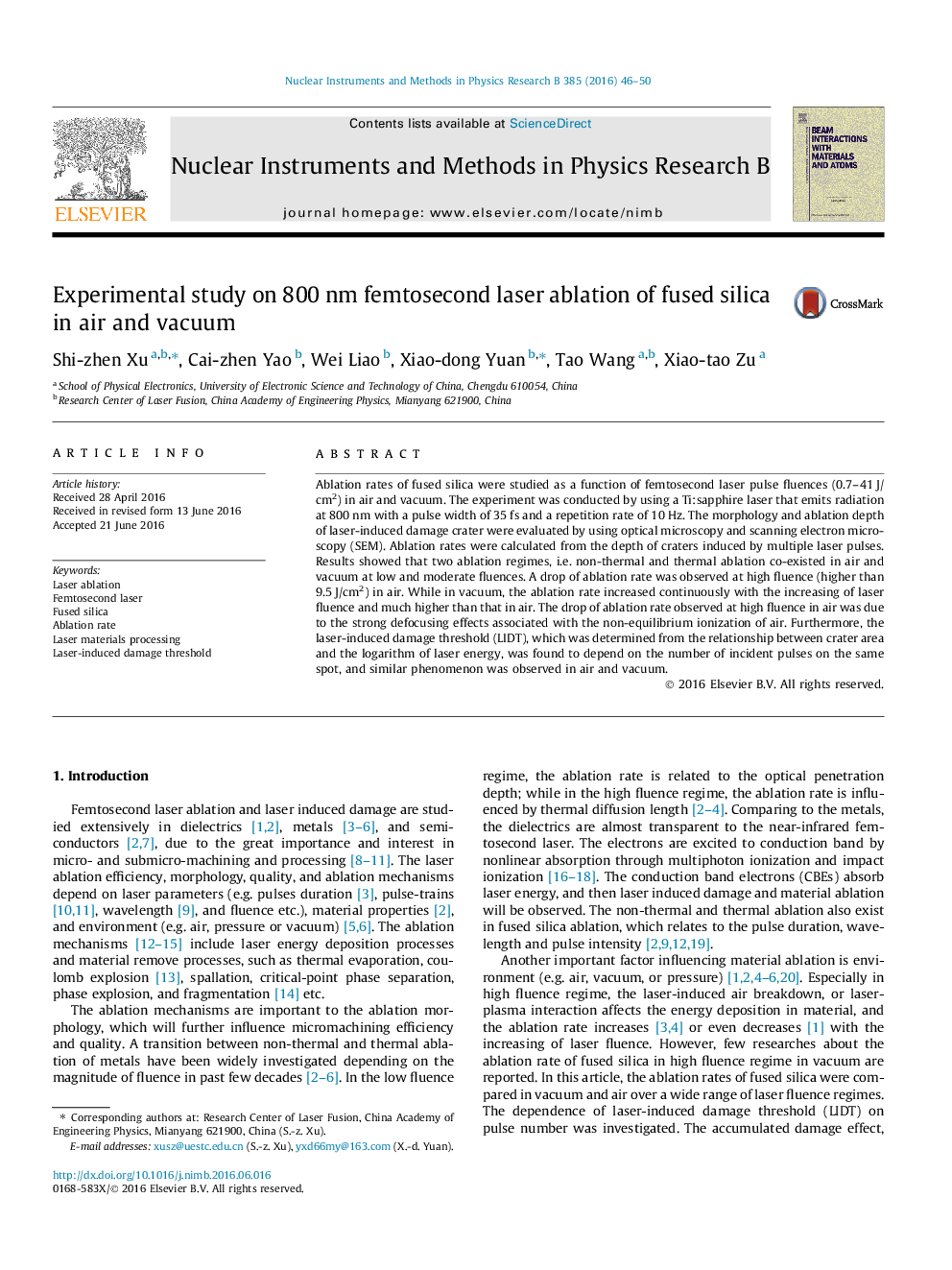| Article ID | Journal | Published Year | Pages | File Type |
|---|---|---|---|---|
| 8039568 | Nuclear Instruments and Methods in Physics Research Section B: Beam Interactions with Materials and Atoms | 2016 | 5 Pages |
Abstract
Ablation rates of fused silica were studied as a function of femtosecond laser pulse fluences (0.7-41Â J/cm2) in air and vacuum. The experiment was conducted by using a Ti:sapphire laser that emits radiation at 800Â nm with a pulse width of 35Â fs and a repetition rate of 10Â Hz. The morphology and ablation depth of laser-induced damage crater were evaluated by using optical microscopy and scanning electron microscopy (SEM). Ablation rates were calculated from the depth of craters induced by multiple laser pulses. Results showed that two ablation regimes, i.e. non-thermal and thermal ablation co-existed in air and vacuum at low and moderate fluences. A drop of ablation rate was observed at high fluence (higher than 9.5Â J/cm2) in air. While in vacuum, the ablation rate increased continuously with the increasing of laser fluence and much higher than that in air. The drop of ablation rate observed at high fluence in air was due to the strong defocusing effects associated with the non-equilibrium ionization of air. Furthermore, the laser-induced damage threshold (LIDT), which was determined from the relationship between crater area and the logarithm of laser energy, was found to depend on the number of incident pulses on the same spot, and similar phenomenon was observed in air and vacuum.
Keywords
Related Topics
Physical Sciences and Engineering
Materials Science
Surfaces, Coatings and Films
Authors
Shi-zhen Xu, Cai-zhen Yao, Wei Liao, Xiao-dong Yuan, Tao Wang, Xiao-tao Zu,
